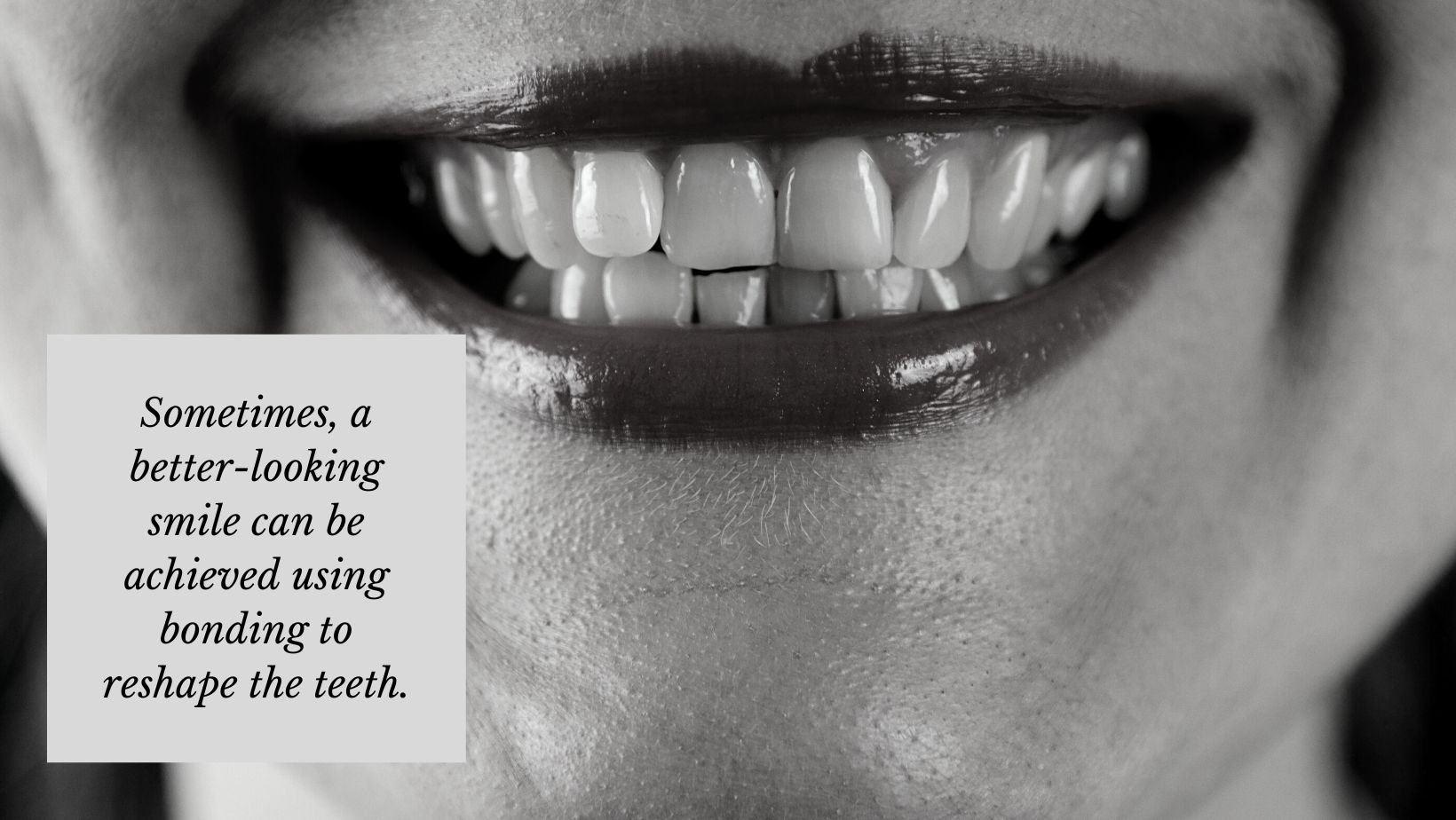Dental bonding is a restoration technique that can fix some common cosmetic issues and improve the appearance of a patient’s teeth. The materials used in teeth bonding are similar to those used for tooth-colored fillings. However, unlike fillings, dental bonding is not used to repair tooth decay: tooth bonding treatments fix imperfections on the surface of the tooth to make it look better.
When learning about the procedure, patients may wonder: What will my teeth look like before and after teeth bonding? The goal of tooth bonding is to fix issues like chips, uneven teeth, and even stubborn stains, leaving the patient with a natural-looking smile. Because tooth bonding materials are matched to the patient’s tooth color, the bonding should blend in and leave the patient with an improved smile.
What is Bonding on a Tooth?
The same materials used in composite resin fillings are used for dental bonding. However, since no cavity is being filled, there is usually no drilling or anesthetic (numbing medication) required. The dentist prepares the tooth by creating a rough surface and brushing on a conditioning solution. Both help the bonding materials attach to the tooth.
The dentist chooses a shade of composite that closely matches the color of the patient’s tooth. Then they apply the material, which is similar to putty at this stage, molding and sculpting it to the correct shape. Once the composite is shaped, the dentist uses a blue curing light to help the composite harden. To finish the restoration, the dentist smooths any rough edges and polishes the tooth. With imperfections now fixed, the result will simply look like a natural tooth!
Teeth Bonding: Before & After
Teeth bonding with composite can address a variety of minor dental problems to give patients a natural-looking smile.
Fixing Chips
Dental bonding is effective for fixing small chips or cracks, especially on front teeth where these types of defects are most noticeable. Bonding can be used as long as the structure of the tooth is intact. For larger tooth chips or cracks, dentists may recommend veneers or crowns. These are more involved restorations that completely cover the tooth.
Closing Gaps
Composite bonding can correct small gaps between teeth – and is much faster and less expensive than other options. The dentist can use composite to build up one or more teeth to close the gap. Of course, larger gaps often require treatments like braces, Invisalign, or other orthodontic options.
Reshaping Teeth
Sometimes, a better-looking smile can be achieved using bonding to reshape the teeth. For example, the dentist might add composite material to a short tooth to make it even with the surrounding teeth. Reshaping can also be used to fix overlapping teeth. It both improves the look of the patient’s smile and makes the teeth easier to clean.

Stain Removal
While many stains can be removed with over-the-counter or professional whitening treatments at the dentist’s office, some types of discoloration do not respond to those methods. Covering the stained area completely with composite is an option. Bonding can match any color so it works well at hiding hard-to-remove stains and discolored areas.
Benefits of Teeth Bonding
Tooth bonding is a safe, simple procedure that delivers noticeable results in the patient’s before-and-after photos.
Pain-free, long-lasting results
Bonding on a tooth is less invasive than having a cavity filled. It doesn’t require any anesthetic or drilling to prepare the tooth. The procedure is typically comfortable and quick, many times taking less than an hour. Though the treatment is fast, composite is very durable. The results of tooth bonding procedures are long-lasting.
Less expensive
Dental bonding can fix a number of minor cosmetic issues and defects and costs much less than alternatives like veneers and crowns. It can also be used to address problems like gaps or overlapping teeth – requiring a fraction of the time and cost required for alternatives like braces or Invisalign.

Prevents further damage
Though bonding is often used to address cosmetic dental issues, fixing chips and cracks helps preserve the strength of the affected teeth, preventing further damage down the line. Repairing problems with composite bonding can also improve the patient’s bite and make their teeth easier to clean.
Teeth Bonding Drawbacks
There are some potential drawbacks to consider when discussing tooth bonding with your dentist. First, it is not an option for all problems. The treatment is best suited for otherwise healthy teeth that have minor damage or imperfections. For severe problems, the dentist will recommend more involved treatments.
Staining
Composite resin is more porous than tooth enamel, which means it’s easier to stain. Patients with teeth bonding may need to limit foods and drinks that stain (coffee, wine, berries, etc.).
Durability
Although the composite resin used for bonding is quite strong, it’s not indestructible. It’s possible for bonding to crack or break off, especially when the restoration is on a biting surface. Bonding on the front surface of the tooth often lasts longer. Patients will need to be careful when biting down on hard foods and are advised to avoid chewing their fingernails, ice, or other hard objects.
Teeth bonding treatments typically last 5 to 10 years. Though this is less than the 15-year average lifespan for alternatives like veneers and crowns, the lower price and easier procedure make bonding a practical and economical choice.
Patients can also extend the life of the composite bond with good dental hygiene habits and regular dental cleanings.
Find Out if Tooth Bonding is Right for You
Teeth bonding is a safe, inexpensive way to fix some minor imperfections on your teeth – all in a single dental visit. The best way to determine if tooth bonding will improve the before-and-after photos of your smile is to discuss all the options with a qualified dentist. Use our online dentist search tool to get started today!


